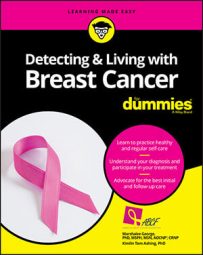The reasons for this are very controversial. Research in past years has shown that Black women have a higher incidence of triple negative breast cancers, though in clinical practice, cancer providers may observe differently. Care givers provide care to equal numbers of both races of women with triple negative disease; the only common denominator is that the women are younger (under the age of 50). The verdict is still out on the true incidence according to ethnicity with triple negative disease. Several ongoing studies at the National Cancer Institute and NCI-designated cancer centers should help inform us in the near future.
Black women are also more likely to have higher grades and stages of breast cancer — in other words, they tend to have breast cancer that has spread to the lymph nodes under the arm and elsewhere, in comparison to White women. Research has shown that the driving factors in the higher incidence of breast cancer in Black women under 45 years are genetic mutation, family history, environment, lifestyle, socioeconomic status, cultural factors, and barriers to care. Lack of access to mammograms, delay in follow-up of abnormal mammogram results, denial of breast symptoms, competing priorities (single mother, other illnesses, and so on), lack of trust in the medical system, and financial limitations are all concerns for higher rates of breast cancer in Black women under 45 years.Asian, Hispanic, and Native American women have a very low risk of developing breast cancer and dying from the disease.
For men, breast cancer is more common in White men than in Black men and least common in Asian men.
Information on breast cancer risk factors for Hispanic women is limited, even though they are the fastest-growing minority in the U.S. Hispanic women are quite often diagnosed with advanced breast cancer in comparison to non-Hispanic white women. The most perceived risk factor for breast cancer in Hispanics is less use of mammography screening in comparison to Black and White women.
Hispanics can have a lower risk of breast cancer if they have the gene ESR1. Research has shown that Hispanics are a heterogeneous population because they often have American Indian and European ancestry. When postmenopausal Hispanic women were tested in a U.S./Mexican breast cancer health disparities study, many Hispanic women were found to have the gene ESR1, which is typically found in Native Americans and which lowers the risk for breast cancer.
Overall, the risk of breast cancer typically increases in women who migrate to countries with high breast cancer incidence rates (such as the United States) from other countries with low incidence rates.
